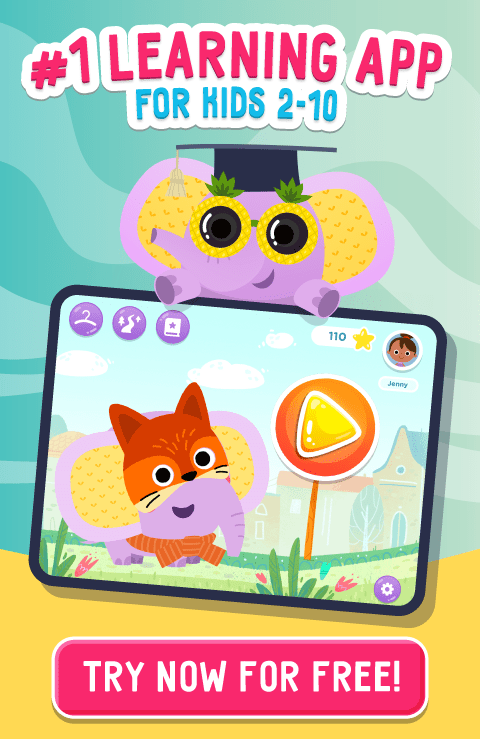Didactic Materials - Page 2
Daily Knowledge Boost with Kids Academy: Properties of Matter for 2nd Grade
Nov. 22, 2024
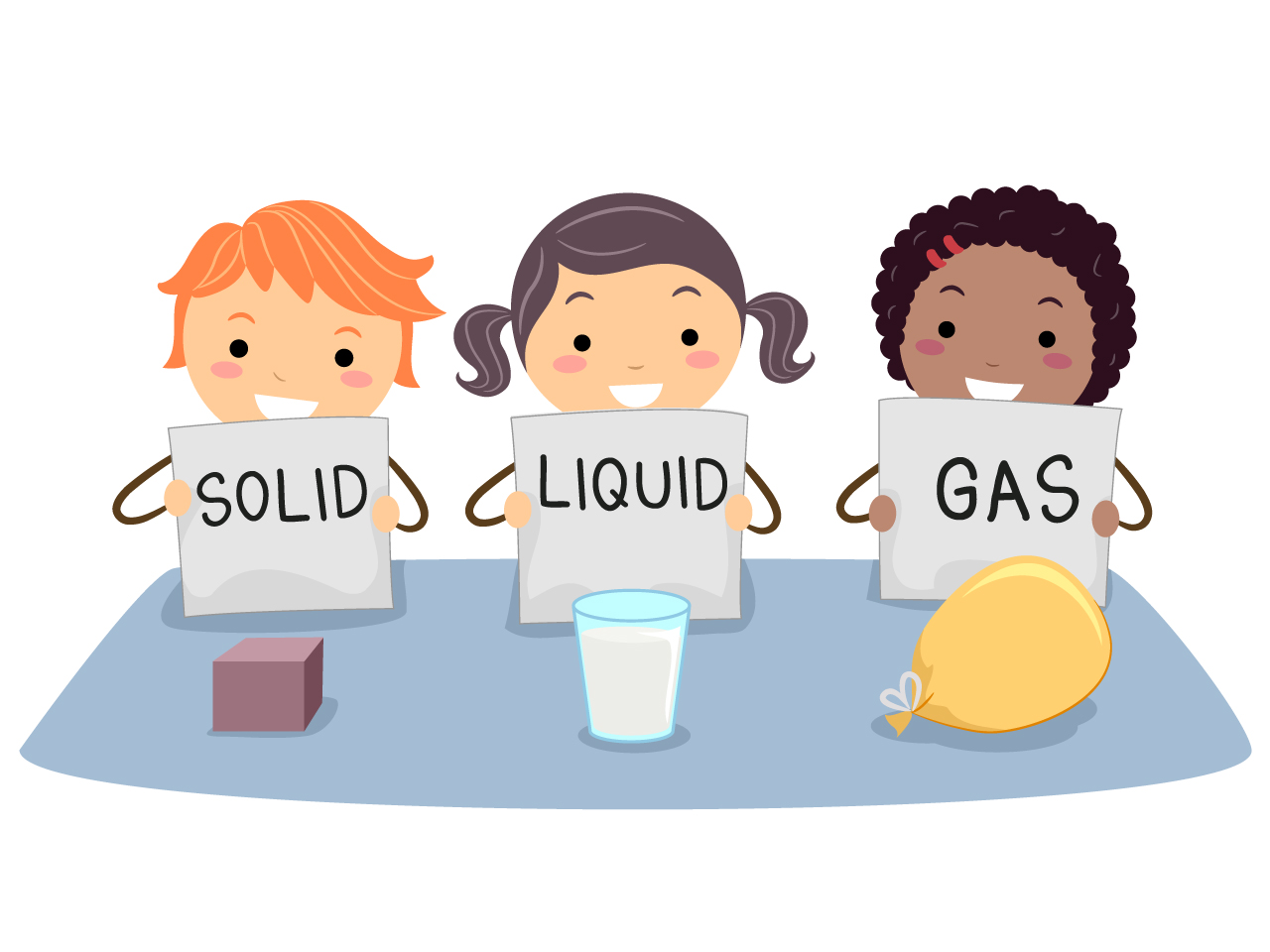
In 2nd grade it is very important for learners at this age to dive deeper into the world around them. The properties of matter are the basis for future science learning. Students start with this topic in Kinder and deepen in its complexity as they move up in each grade. Exploring matter encourages students to observe and inquire and gives opportunities for students to practice critical thinking and observation skills.
Daily Knowledge Boost with Kids Academy: Reading Time and Clocks for First Graders
Nov. 15, 2024

An essential life skill that children are learning in 1st grade are concepts around and involving time. Learning to tell time at a young age has many benefits. Mastering this skill can help children develop a sense of responsibility, enhance cognitive development, and support academic growth. It also builds foundational math and cognitive abilities and fosters independence for children in 1st grade and further. Today’s knowledge boost includes opportunities for students to explore the hour and minute hands on a clock, reading time on a clock to the hour and half, as well as looking at a digital and analog clock.
Daily Knowledge Boost with Kids Academy: Learning About Space in First Grade
Nov. 5, 2024

As a child grows, it is important to foster their curiosity of the world around them. The sun, moon, and stars are a topic of extreme interest for students in 1st grade. Building a strong foundation of knowledge about the main parts of our solar system can develop a sense of wonder about the universe and their place within it, as well as inspire future interest in the STEM fields. Mastering these concepts will also build a strong foundation for more complex topics. Today’s daily knowledge boost allows children to explore and gain knowledge about the sun, moon, and stars!
Daily Knowledge Boost with Kids Academy: Exploring Shapes in Grade K
Oct. 9, 2024
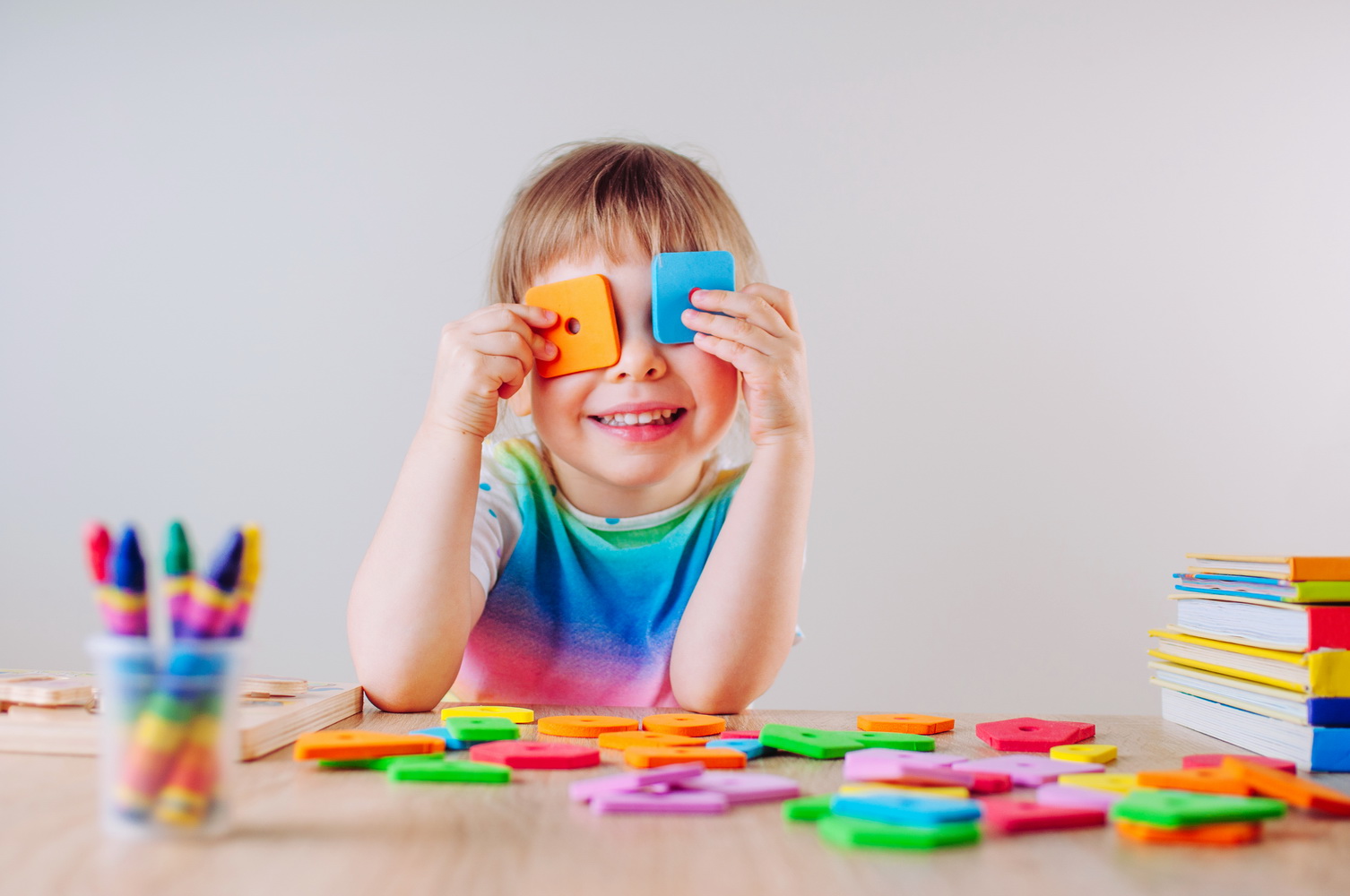
By the end of Kindergarten, one goal is for children to be able to identify shapes around them in the world. Not only will children learn to identify shapes, they will be able to sort and make all different types of shapes. Today’s daily knowledge boost allows children to practice the skills of recognizing shapes, creating shapes, counting sides and corners in shapes, and identifying 2D or 3D shapes.
Daily Knowledge Boost with Kids Academy: Preschool Fun with Matching and Sorting
Sept. 19, 2024
An easy way to boost early learning is to practice matching and sorting objects and images by shape, size, color, and more! The best part is that matching and sorting is fun! It feels more like a game, which is so important for young children who learn best through play.
Kids Academy offers several lessons in different subjects that practice this important skill. All activities featured below can also be found on the interactive Classroom interface. While lessons with more than three activities are only available in Classroom Pro, all activities below can be found on the Kids Academy Website and completed using a web browser.
Daily Knowledge Boost with Kids Academy: Cross Curricular Reading Practice for 1st Grade
Aug. 16, 2024

Our knowledge boost today is focused on the idea that reading is everywhere and is necessary for success in all subject areas as well as in life. Keep reading to discover a hand-picked collection of ELA, math, social studies, and science online lessons that are ready-made and support learners’ reading comprehension.
All lessons featured below are found on the interactive Kids Academy Classroom interface, which enables children to complete each activity digitally and provides parents with an informative progress reporting system.
Daily Knowledge Boost with Kids Academy: Kindergarten Tracing Lessons
Aug. 7, 2024

Today’s knowledge boost focuses on tracing and practicing pencil strokes across the curriculum! The first, ELA, lesson is all about writing and recognizing uppercase letters from A-I. The second, math lesson tasks children with making circles and squares. Finally, the World Around Us lesson teaches kids simple words in Spanish to enrich their cultural knowledge. We also provide you with our suggestions of fun, physical brain breaks to keep learners excited and focused!
Check Out Our Collection of Word Problem Worksheets and Videos!
June 12, 2024

It’s no secret that word problems are notoriously challenging for early learners. They’re so tough because solving them takes reading comprehension and mathematical skills, both of which are still new to kids in the first few years of their schooling. However, teaching word problems from a young age is incredibly important for fostering critical thinking and problem-solving skills while allowing children to understand how math applies to real-life situations.
Kids Academy offers a large library of word problem worksheets for learners at every level! Let’s look at some of our best word problem worksheets and teacher-led videos that will help students master the solving strategies.
Easy Addition and Subtraction Worksheets for Kindergarten
April 30, 2024
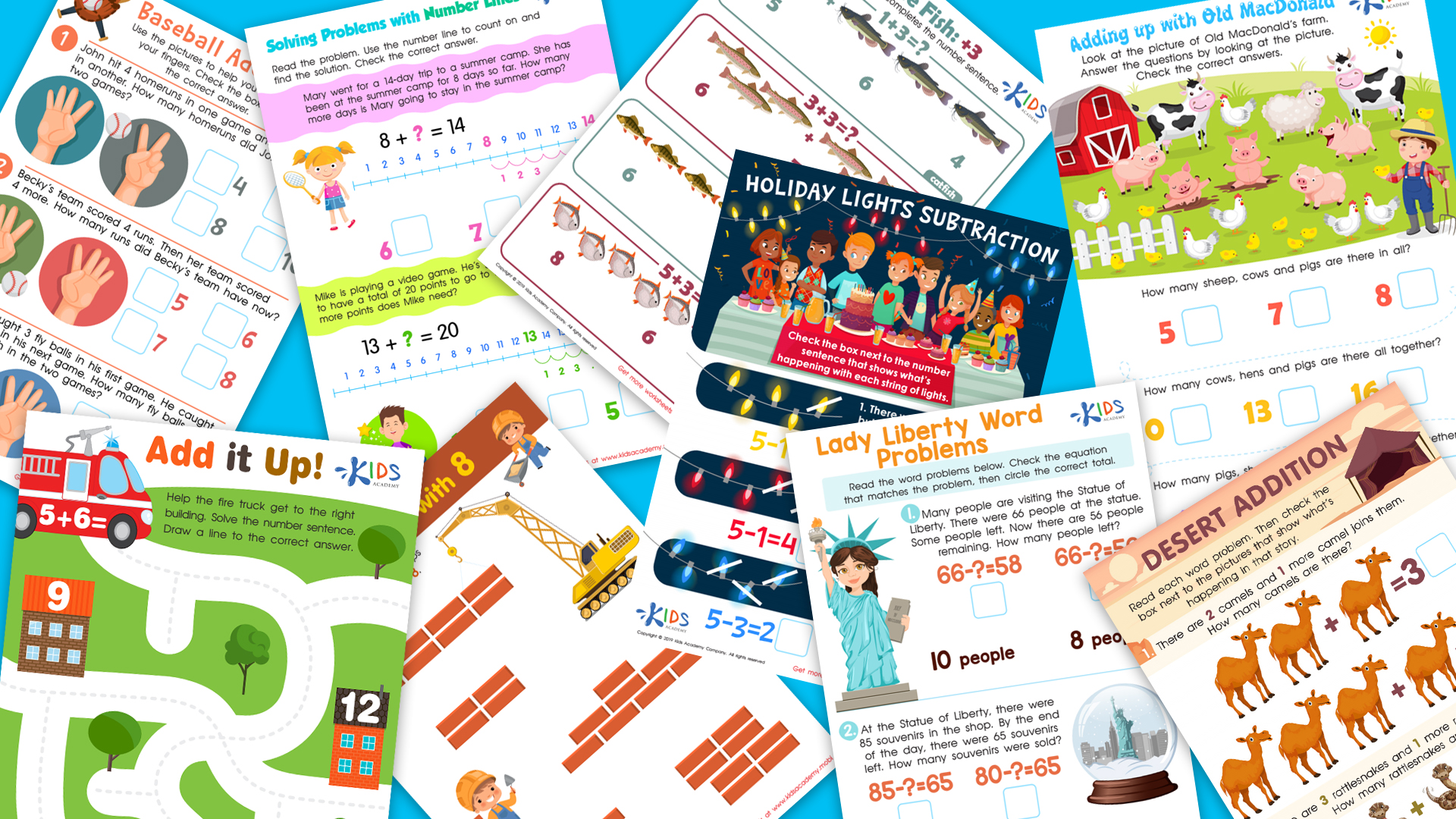
During their first school year, grade K, children learn the basics of operations with numbers, such as counting groups of objects and counting forward and backward along a number line. When it comes to addition and subtraction, by the end of the year learners should master single digit addition, subtraction, and follow multi-step directions in word problems.
If you’re not sure where to start their addition and subtraction journey, let’s explore the milestones that all early math learners must master, along with helpful simple worksheets that they can use for practice.
Graph Worksheets and Lessons for 9-Year-Olds
March 19, 2024

Learning to read different types of graphs is a crucial skill for early learners. After all, graphs are powerful visual tools that help children understand and interpret data, fostering critical thinking and analytical skills. Early in elementary school, students are typically introduced to graphs through tally charts as early as kindergarten. By the time they reach nine years old, it’s important that students learn to read and analyze different types of graphs.
While it may seem as though data analysis is a boring skill to learn, with a little bit of creativity, graphs can be an enjoyable skill for students to master, especially when they experience relevant, hands-on practice. Let’s explore the different types of graphs your little data analyst needs to learn and the best strategies to use to teach each kind.
-
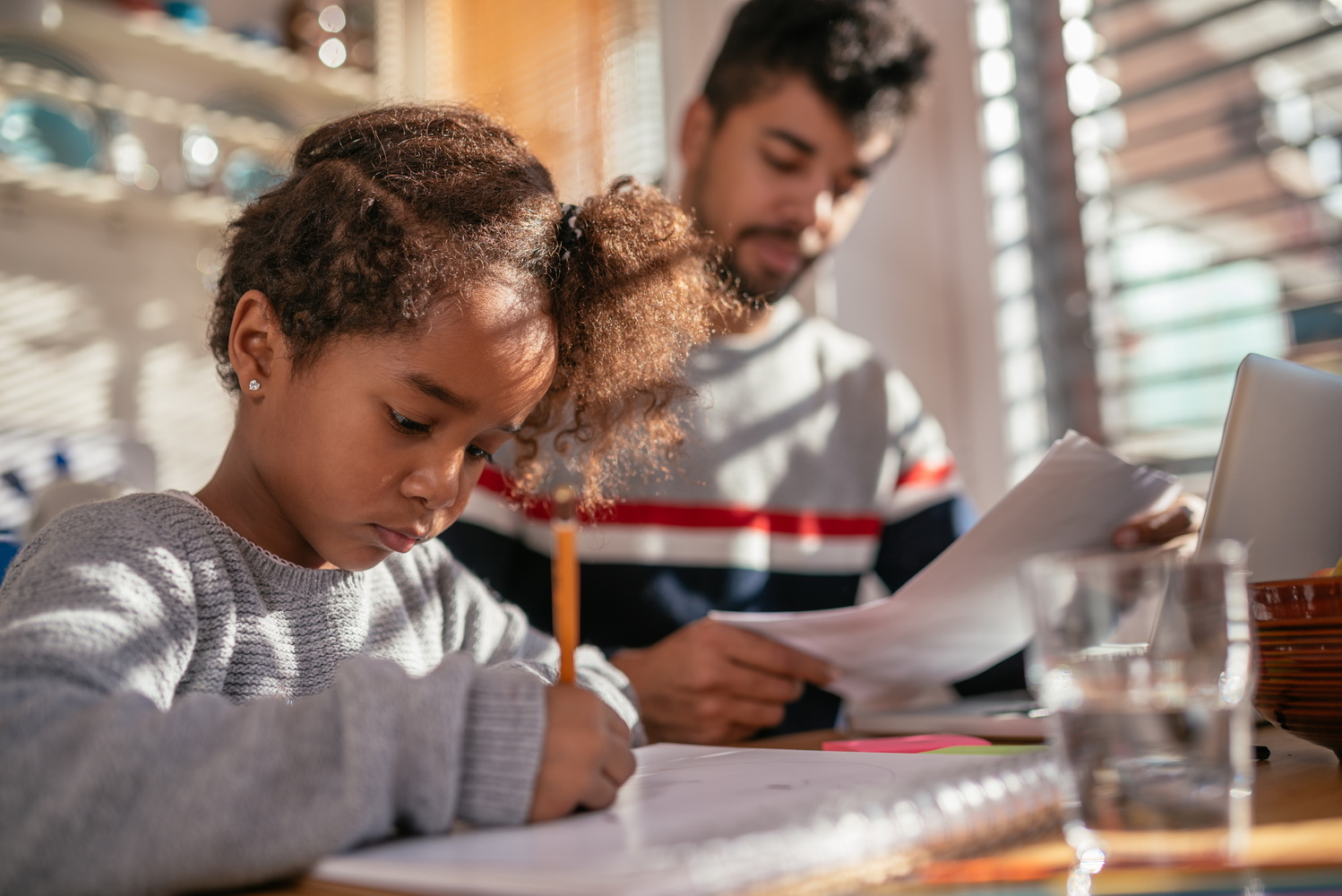 Dec. 5, 2025
Dec. 5, 2025 -
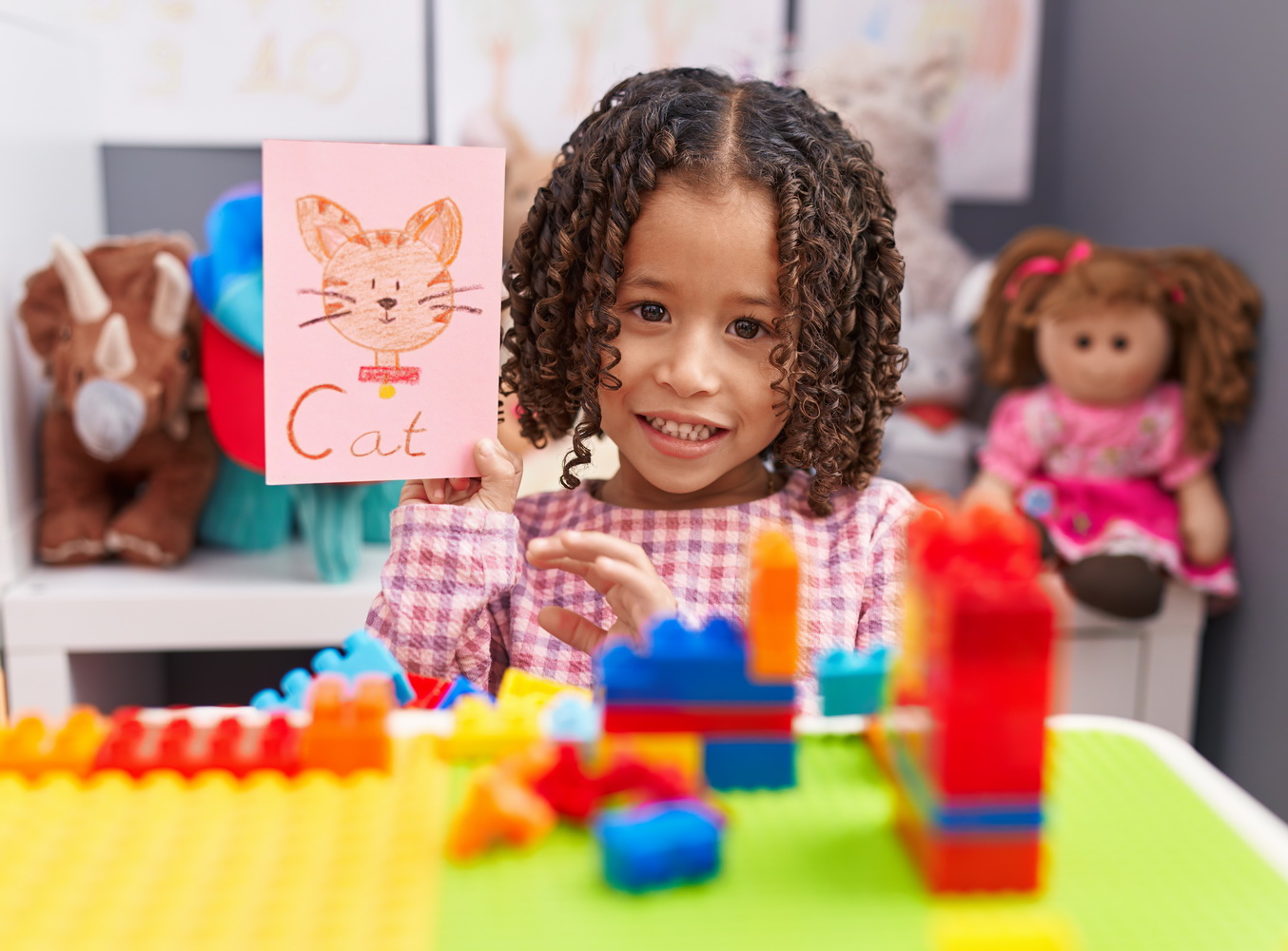 Nov. 28, 2025
Nov. 28, 2025 -
 Oct. 29, 2025
Oct. 29, 2025



